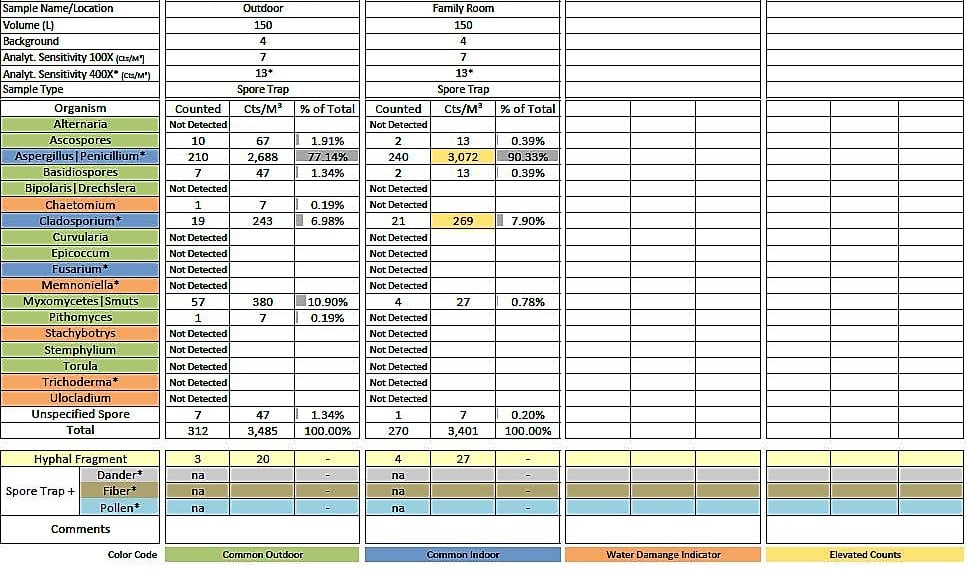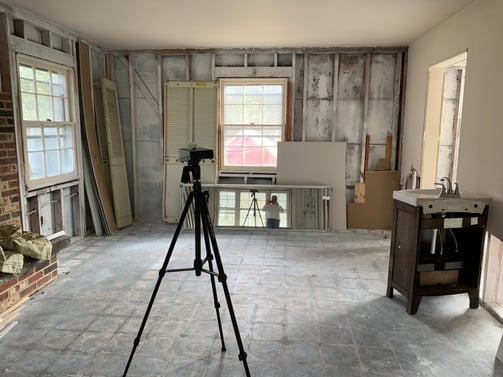Mold Inspection & Testing. What to know before you have work performed.
When purchasing a property, for due diligence a home inspection is meant to uncover defects or areas in need of repair, a mold inspection however, is performed to evaluate for mold, either the entire dwelling or an area of concern such as a basements, crawl spaces, attics, living rooms, etc.
Everyone thinks that they are a mold expert and, in truth, few people know tons about mold. Since most states don’t have licensing for mold inspections, it is simple for someone to proclaim themselves as an expert and do mold related work such as testing and remediations.
Some of these so called "proclaimed mold experts" provide mold testing and once the testing is complete the samples are sent or delivered to a laboratory. The laboratory tests the sample for mold spore types and provides multiple pages of the test results with filler material consisting of an explanation of different types of mold. The lab may also use colors to point out mold levels that the lab (not the mold expert) are saying are of concern. This lab data is typically the complete report that the "mold expert" provides.

Example of a Mold Report. No analyzation.
We see this on 90% of the mold reports we are provided to peer review or to provide an estimate for remediation. The problem is the mold expert provides no narrative of what they saw, why they tested, condition of the room, photos of the area or of the area sampled and lastly and really most important what the test results mean.
The by product of a these type of mold inspections gives you a very vague document, which many "mold experts" have told me they do on purpose. These people don’t want to give a lot of detail and then be held responsible if its incorrect. In all actuality, you pay for a professional opinion, but do not get one.
You get what you pay for and the quality of work is directly related to the skill set of the inspector, which we have found can have varying degrees of quality.
Lets be clear, you want a mold inspection because?
Clear project objectives are important from the start of any investigation.
Where a home inspection is meant to uncover defects or areas in need of repair, a mold inspection is performed to evaluate for mold, either an entire dwelling or a specific location.
When evaluating for mold be it visual, or by laboratory analysis, explanation of observations (what was found), if mold was visually detected (why was mold present?) and when testing is performed what would be an acceptable or unacceptable results?
Surface Sampling

Example of Photographing sampling area.
Case in point when you have a discolored area say on a wall and/or ceiling, that you suspect is mold you can test the area to confirm if it is or is not mold. Surface sampling is performed by either "tape" sampling or taking a "swab" of the area. This sample goes to a lab where they look at it under a high powered microscope to see if mold spores are present. This is typically a pass fail test, either you Got Mold or you don’t.
But you also need to know the following:
- Why is mold growing?
- Was the cause of the mold growth fixed or is it still active?
- What will it take to remediate the mold?
You won’t have successful mold remediation without questions 1 & 2 being answered.
Air Sampling or Spore Trap Sampling
Air sampling is how you can find mold that is not visible (behind a wall) and it can also tell you if mold found in a basement or other areas is affecting air quality on the first floor.

When air sampling is performed, it is a sound practice, as a mold inspector, to photo document and provide a narrative description of sampling activities. The reason the results can be biased depends on sample collection technique, height, location, room conditions, etc. Results can also be amplified based on room contents. An empty dwelling can have a different reading than one that is occupied with possessions.
Imagine a freshly painted room with new carpets have an elevated air mold spore count. The conclusion likely to be drawn from this is that there is hidden mold, likely behind an outside wall or other area where water events may have occurred. The painting of the room may have been performed to cover mold damage to the room.
In both air and tape mold samples certain “marker” species of mold can indicate interior water damage (as opposed to an outdoor mold) and subsequent microbial amplification.
What causes Mold?
Mold is only going to grow in the presence of moisture in a built environment. Any assessment when mold is noted or suspected, needs to determine the source of the water and often times there is more than one source.

Water intrusion due to faulty downspouts and landscape grading.
When should you remediate mold?
Initially any visible mold growth is a driver for remediation, in this case only water staining was noted, no visual mold growth. The EPA agrees that testing is not required when visual presence is noted.
What is the minimum you want from a mold inspection?
It is critical in any mold inspection to document the condition of the room and reference the contents. This is important because items in a room can affect test results.
When mold is found, the likely cause should be identified.
If the whole room has mold it should stated, if mold is limited to day the lower section of a well, well that needs to be stated. All to often we read a report that says mold was found in the basement. Our question is where and why?
Without regulatory reference values for mold concentrations (no federal guidelines), it is generally accepted that the following conditions should be satisfied:
- No hydrophilic mycotoxin producing fungi should be present above the detection limit of one spore (such as Stachybotrys or Chaetomium),
- The water-damage indicator mold species (such as Penicillium/Aspergillus) concentrations should not exceed 1000 structures per cubic meter unless room contents (possession) could cause amplification.
- If outdoor or background air sampling is performed, you typically want indoor samples to have lower levels than outside and similar types. Outdoor spore count can vary greatly though out the year. Comparison of indoor to outdoor mold levels, that each type of mold in the indoor sampling should typically be less than the same type of mold on the outdoor sample (if applicable – 10% differential).
Mold questions? Learn more about mold frequently asked questions.


